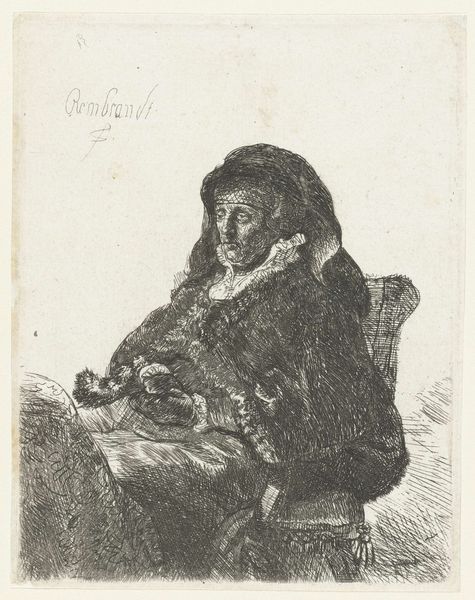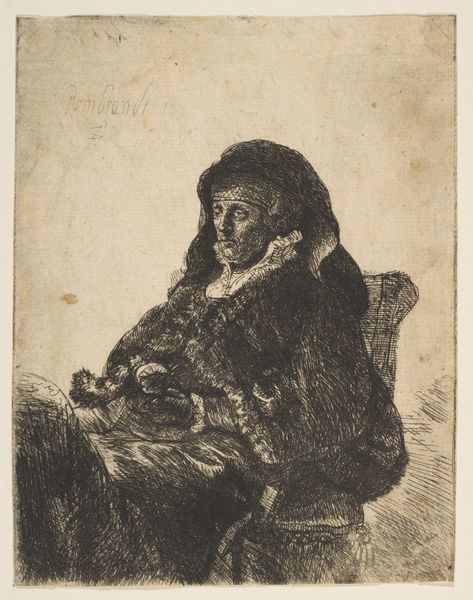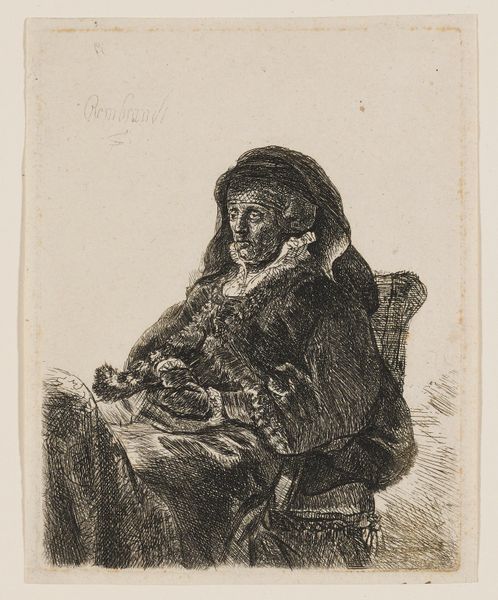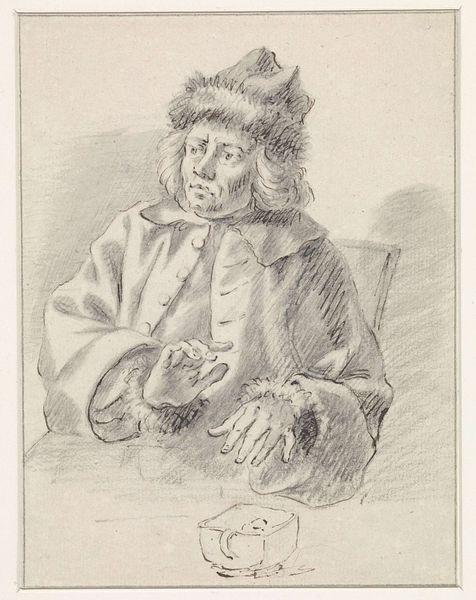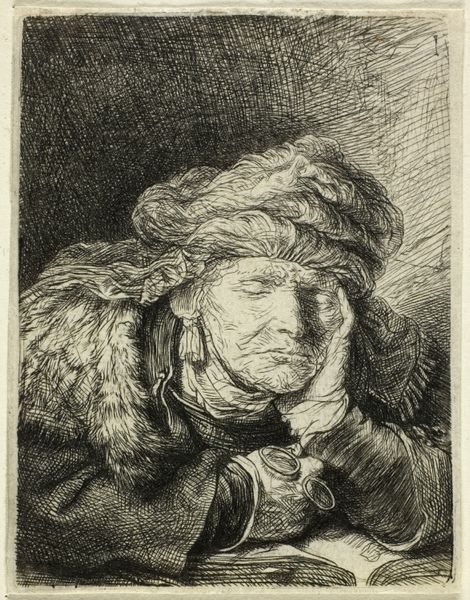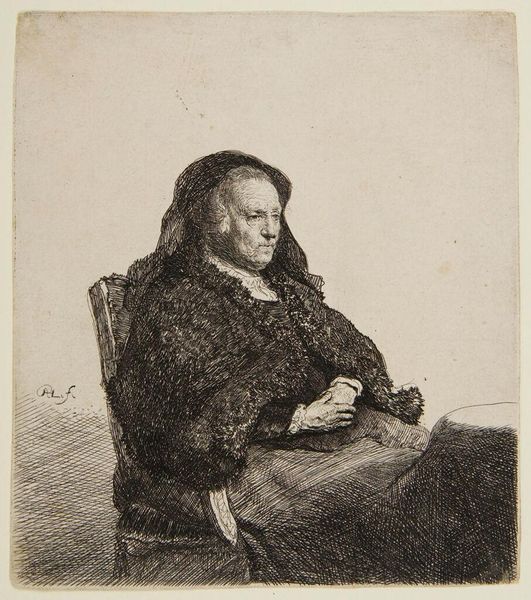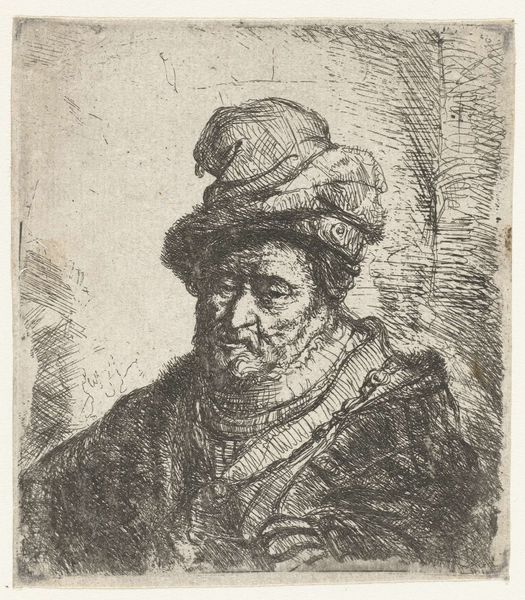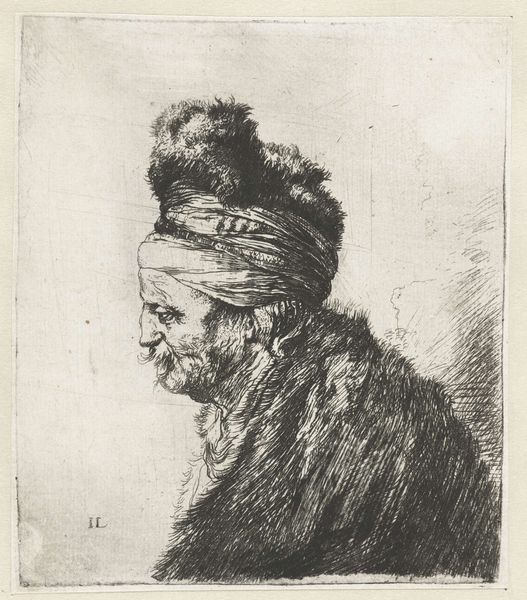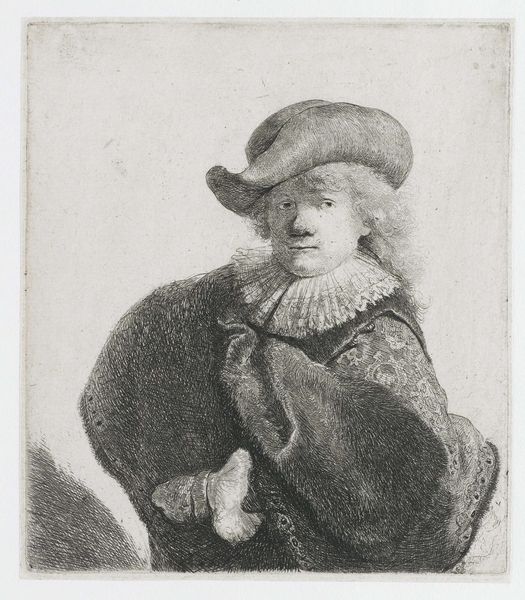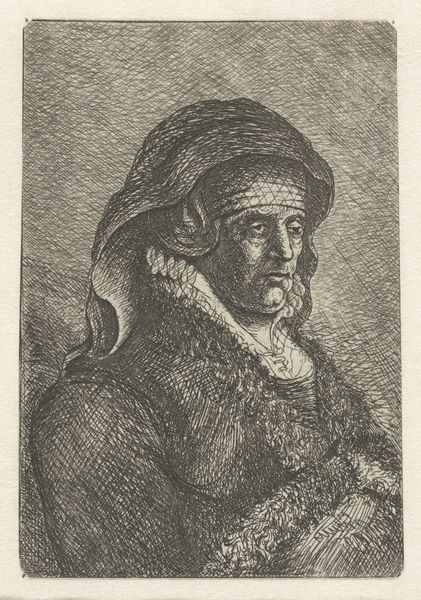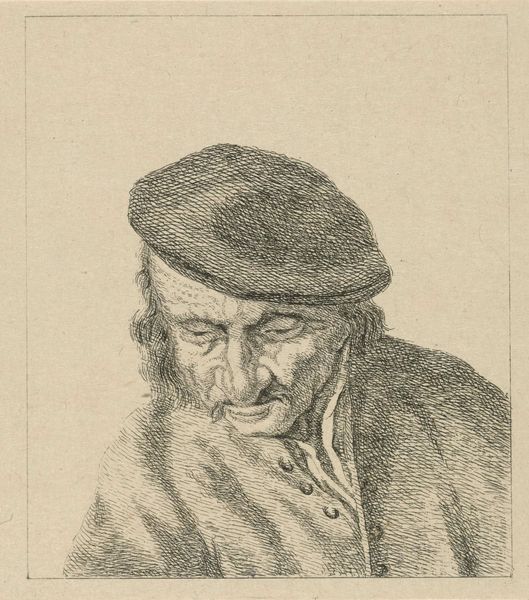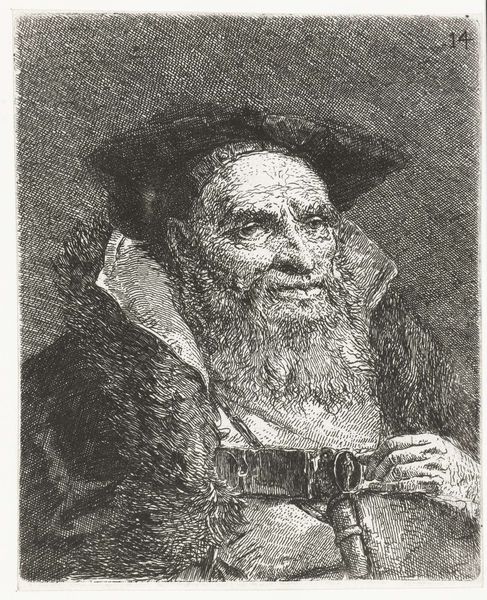
drawing, paper, ink
#
portrait
#
drawing
#
baroque
#
dutch-golden-age
#
charcoal drawing
#
paper
#
ink
#
coloured pencil
#
genre-painting
Copyright: Public Domain: Artvee
Curator: Take a look at this portrait by Rembrandt van Rijn, “An Elderly Woman,” dating from around 1632 to 1635. He captured this likeness using ink and colored pencil on paper. Editor: She looks profoundly weary. There’s a quiet intensity in her gaze. You can almost feel the weight of years in the slumped posture and in the heavily shadowed textures of her clothing. Curator: Indeed. What strikes me immediately is how the social and cultural norms of 17th-century Dutch society allowed for this sort of unvarnished portrayal. Genre paintings and portraits weren't always about idealizing the subject; they served as mirrors reflecting different facets of life. Rembrandt was exceptional at capturing that. Editor: It's incredible how much emotion he extracts with what appears to be quite simple materials. Looking closely, you notice how the weave of the paper and the subtle variations in ink tone bring a tangible reality to the figure, from the wrinkled fabric to the fur trimmings on her garments. Curator: And don’t overlook the social impact of printmaking at the time. This drawing likely served as a study for a larger work or perhaps even a print. Consider how that accessibility, and the ease of reproduction, changes the dynamic between artist, subject, and the viewing public. It moves away from commissioned work for a single patron toward art with wider social consumption and meaning. Editor: Thinking about her garments... the dark fabrics communicate both modesty and perhaps a certain societal standing; even humble garments needed labor, materials, resources to produce. How do these details situate her within the broader social tapestry? Curator: The detailed study of textures speaks volumes, wouldn’t you agree? The lines practically convey the feel of aged skin, worn fabric. What initially appeared to be a straightforward portrait transforms into something profoundly moving. Editor: Yes. Seeing how Rembrandt used those simple materials available to him, and understanding his subject's position in society, does change how I view art in the galleries around us. Curator: For me, I see this work as a testament to the role art plays in bearing witness to a time. This piece transcends mere aesthetics; it preserves a fragment of human existence.
Comments
No comments
Be the first to comment and join the conversation on the ultimate creative platform.
